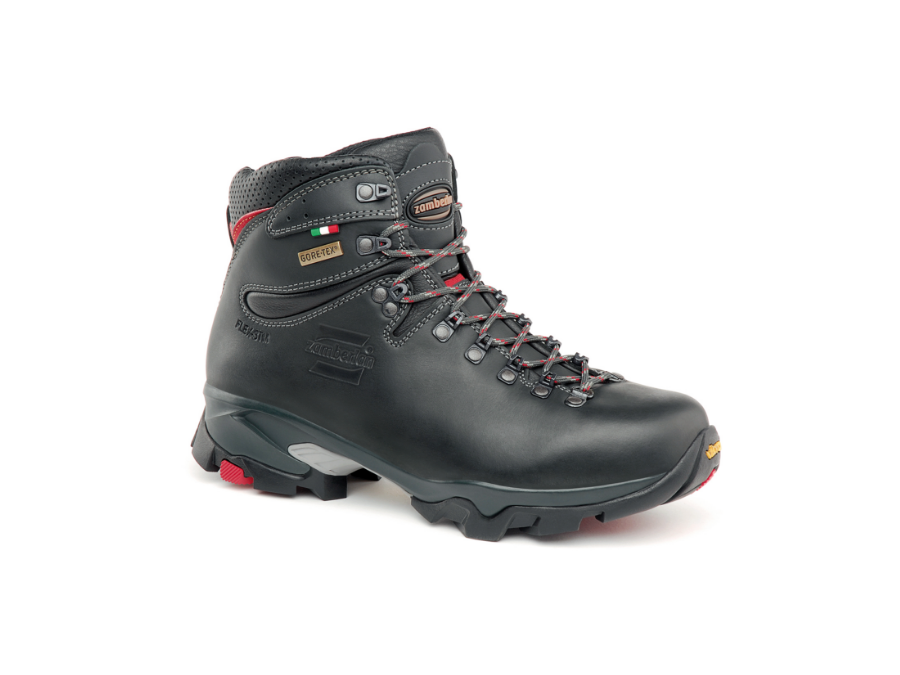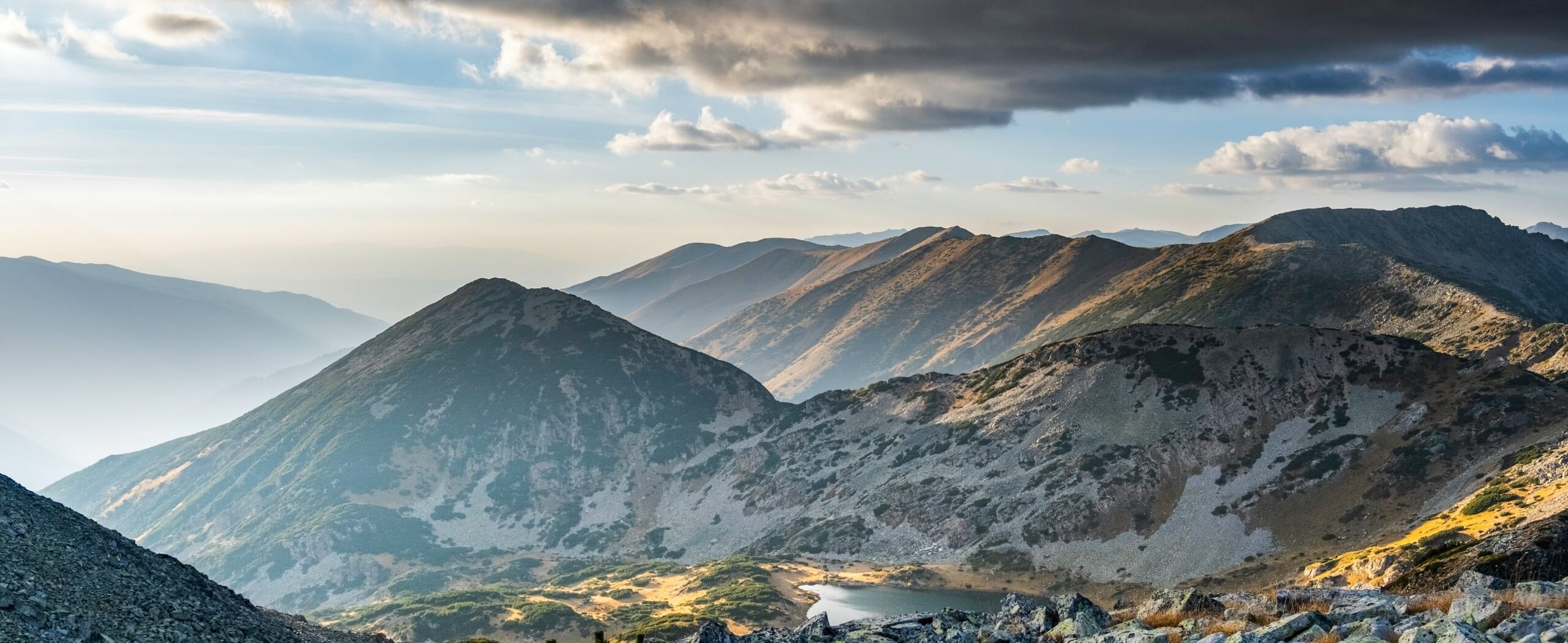Tips on how to stay warm backpacking?
You may find yourself camping next to a group that wasn’t prepared for the cold, who have to pack up at first light and head back to the trailhead, unable to enjoy the backcountry. Make sure this isn’t you by following our top tips for staying warm while backpacking.
Make sure you have gear for all weather scenarios
Here in the Canadian Rockies if you don’t like the weather, just wait 5 minutes and it will change. That means you need to be prepared for a variety of weather scenarios.
Unfortunately (for the weight of your pack) there are no guarantees on weather forecasts in the mountains, and you need to be prepared for all weather conditions, not just the ones in the forecast.
This unpredictability means layers, starting with light gear for hiking on hot days, layers for when it gets cold and Gore-Tex outerwear for when it rains.
People have many personal preferences when it comes to the clothes they hike in, but ideally you should wear something comfortable, lightweight & breathable.
Zip-off hiking pants are popular for starting your day in the chilly shadow of a mountain and finishing in the blazing afternoon sun.
Some people prefer to wear tights below shorts, putting the tights on once it gets cold out. This is a bit more cumbersome, but the tights are usually more comfortable and warmer than hiking pants.
Ultimately, ensure you have the right gear and make sure you’ve used it before you go backpacking.
Avoid cotton
Many women like to hike in leggings, however on a backpacking trip I recommend against them. Leggings provide little warmth or wind protection and are often made of cotton which doesn’t keep you warm while backpacking.
Cotton should be avoided as much as possible as it absorbs up to 27 times its weight in water. This conducts heat away from your body and can potentially lead to hypothermia. The old adage “cotton kills” is true. Additionally, it takes a very long time to dry and you’ll end up carrying around a heavy, soggy lump of clothing if caught in a sudden rainstorm.
Prepare for rain
Mountain weather is unpredictable, and that means being ready for whatever comes your way. This is especially true for rain, as being wet is not just a downer on a backpack, it’s actually quite dangerous. A rain jacket is essential and investing in a set of rain pants and a pack cover will go a long way towards keeping you from sleeping in cold, wet gear. Spend the money and buy a good Gore-Tex rain shell.

Keep an extra change of clothes
When you reach camp, change into a “clean” set of clothes. If you’ve been sweating, let your hiking clothes dry out on a tree branch.
It’s nice to feel a little cleaner after a hike, especially when showers are far away, and you won’t have moisture next to your skin to conduct heat away. We like to take a little quick-dry cloth and give our body a little clean before putting on our “clean” clothes. This keeps us feeling fresh, less smelly and keeps our sleeping bag nice as well.
We like to put on thermals/long johns after dinner (or earlier if it’s chilly). These are comfortable, lightweight, warm, and (if you get the good ones) don’t tend to smell. Bring one or two sets to layer. Team that up with a warm fleece & down jacket, and potentially fleece pants if you tend to get cold.
Pack winter gear
Winter gear? In summer? Why? In the Rockies, and many other mountain ranges, even in mid-summer, day temperature highs can be as low as 10to 12°C, and overnight can drop to -10°C. That’s chilly!
Remember the rule of thumb, for every 100m of elevation you ascend, temperature drops by 1°C. So even if the overnight low is forecast to be 10°C in town, if you’re sleeping above 2000m things can get very frosty.
I always bring my biggest winter down puffy jacket on every backpack I do. It’s light, packs down super small, and if it’s not cold enough to use, it makes a comfy pillow. I also bring other winter gear, like a warm toque (beanie), mitts, and a set of warm clothes, usually fleece.
Keep your feet dry
Your feet are critical for your backpacking trip and staying warm.
To begin with, have good boots that you’ve broken in. Ideally your boots are waterproof and are complemented with some lightweight gaiters to keep the water from getting inside your boots. Keeping your feet dry is a great way to keep them in great shape and keeping you warm.
Also, bring extra socks. Having a dry pair of socks to change into after a wet day is wonderful, and on really wet trips, socks never seem to dry out.

Bring good sleeping gear
When it comes time to sleep, you want to be warm. In fact, most people find the hardest cold to deal with is overnight, often between 4am and 5am.
To start with, wear thermals and fleece to stay warm. Don’t waste weight on pyjamas, which are also often cotton. We plan our clothes so that we can layer up, and use those mitts, hats and socks when the temperature drops.
A good sleeping mat provides a surprising amount of insulation from the cold ground. When purchasing your first mat, compare R-values and weight. If you’re going to be at elevation, or in a colder mountain climate, the extra weight for a better insulating sleeping mat will be worth it.
A good sleeping bag is also valuable to keep you warm from the cold, night air. Mummy style bags work best if done up fully, with the hood up and the draft collar tightened. This traps warm, insulating air in the bag with you.
A sleeping bag liner adds warmth and increases the life of your sleeping bag by preventing sweat and oils from your body soaking into the bag. Try to air out your sleeping bag inside out while you make breakfast or break camp before drying it out completely when you get home. If your bag is too long or large for you, pack your clothes at the bottom to decrease the “dead space” – air that can keep you cold (this is also a good, albeit uncomfortable, method of drying out wet clothes).
Having a hot drink or doing a few minutes of exercise before bed can also help you stay warm and if it’s really cold, boil some water before bed, put it in your Nalgene or Kleen Kanteen and wrap it with a piece of clean clothing. Snuggle with your make-shift hot water bottle to keep warm during the night.
Check the weather before you go
We mention this as one of our safety tips in our backpacking tips article, but please check the forecast before reaching the trailhead. More often than not, backpackers hit the path only to become shocked when it snows, followed by exasperated groans that sunshine showed up on the forecast two days ago. These backpackers then start to freeze and have to turn around, missing out on their adventure.
The moody weather and mountains share a symbiotic relationship, making it essential to prepare for whatever weather comes your way! Pack rain, winter, and summer gear.
This article is part of a series of articles for beginner backpackers. You can see other articles here:
We also have other articles to help you with the basics of travelling in wilderness, such as “How to poop in the Backcountry”, “Being safe around Bears” and “Trail Etiquette”.



Comments
Carl6 years ago
You missed Tip #8 - check the weather and be prepared to stay home if it's forecast to be real cold. It amazes me when people complain about forecasted weather ruining their backpacking trip.
Reply